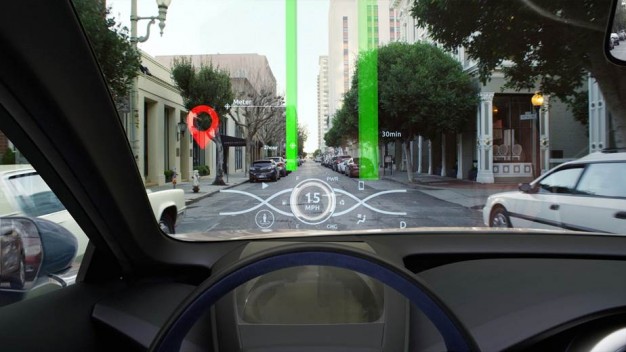With the passage of time and change in needs, safety features are becoming more advanced and better equipped to aid the drivers in safe driving. Predicting the dangers and warning the drivers is becoming a common theme for the latest safety features to ensure that today’s vehicles are safer and more secure than they were ever before.
Head-Up Display (HUD) is one such safety technology that has been improved over time to bring the best information to the driver at the worst of times. Although it was not originally designed for automobiles, it was later improved and redesigned to adapt to the needs of safe driving and help motorists in keeping a watchful eye on the road while driving.
Head-Up Display (HUD) is not a new technology and it has been around since the early 1940s, but it is only recently that we see Head-Up Display (HUD) in new automobiles so frequently. It is becoming one of the most impressive and much-appreciated safety features offered by car brands in their latest vehicles.
Here is everything that one must know about Head-Up Display (HUD) and its advantages before the purchase of a new car.
Also read: Understanding the Importance of Automatic Emergency Braking System
What is Head-Up Display (HUD) and how it Works?
Head-Up Display (HUD) is a transparent display that will present real time data to the driver without the need of taking the eyes off the road. The name stems from the fact that the driver can view the information with the “head up” and looking ahead instead of looking down at the instrument panel.
Usually, drivers look for navigational information in the display screens fitted inside the instrument panel, and that can take the driver’s attention off the road. On the other hand, the Head-Up Display shows such information in an augmented form on the windscreen in front of the driver’s eyes so that the driver can maintain the maximum attention on the road. The modern Head-Up Display (HUD) shows multiple bits of information regarding the road conditions and how the car is being driven. However, generally the Head-Up Display will show the speed of the car, turn-by-turn navigation, gear position, gravitational forces, oil temperature, night-vision, pathways overlaid on the road, foolproof navigation and a lot more.
As the driver’s focus doesn’t get diverted from the road, the probability of a road accident reduces to minimum and this is why Head-Up Display has become an essential safety feature for modern day cars.
Head-Up Display (HUD) In Automotive Industry
Head-Up Display (HUD) became a part of the automotive industry in 1988 through the efforts of General Motors. They were the first to use a Head-Up Display in their Oldsmobile Cutlass Supreme Indy Pace Cars, HUD was also available as an option on Cutlass Supreme and Pontiac Grand Prix before it became a more widely available feature.
In 1998, Chevrolet Corvette (C5) became the first car to offer first color HUD system and in 2012, Pioneer Corporation introduced a navigation system that projected HUD in front of the driver’s view so that real time data for the roads and conditions ahead could be viewed by the driver easily.
Also read: Understanding the Lane Assist Safety Technology
Types of Head-Up Display (HUD)
Currently, there are two types of Head-Up Display that are currently being used in automobiles. While both of these types have the same purpose, there is a slight difference in how the information is displayed in front of the driver.
The two types of Head-Up Display are:
- The first type uses a treated windscreen to display data to the driver. The back of the windscreen is treated in a way that the image of data is reflected back to the driver as soon as it is projected.
- The second type uses a small combiner to display the information to the driver. The combiner is separate from the windscreen and can be retracted.
The modern day Head-Up Display (HUD) uses Augmented Reality (AR) to bring a more advanced system with the use of GPS, infrared cameras and the internet to get the information and turn the windscreen into an information screen.
Benefits of Head-Up Display (HUD)
Head-Up Display (HUD) is more than just a luxury feature or a novelty that one will find in luxury cars. It is quickly becoming an integral part of the modern safety features and this is because of its usefulness for the drivers all over the world.
Here are some major advantages of Head-Up Display:
- Head-Up Display is functional, it shows all the vital information for the driver in one place.
- The data is projected in front of the driver to minimize any distractions.
- The eyes of the driver refocus much quicker because the data is projected and floated 15 feet ahead of the driver.
- The chances of an accident are decreased because the full attention of the driver will be on the road where it is needed the most.
The Future of Head-Up Display (HUD)
Head-Up Display (HUD) is still a relatively new safety feature and only a handful of brands are offering it as a standard feature, however it is mostly available as an optional feature that can be added-on separately. The usefulness of Head-Up Display is undeniable and it is expected that with time Head-Up Display (HUD) will become more advanced to aid the driver to drive safely on any kind of road in any visibility condition.
If you are looking to buy a new car that has a pre-installed Head-Up Display in it, then don’t forget that with us, you can sell any used car in just 30 minutes while all the post-sale paperwork is handled by SellAnyCar.com’s team.





